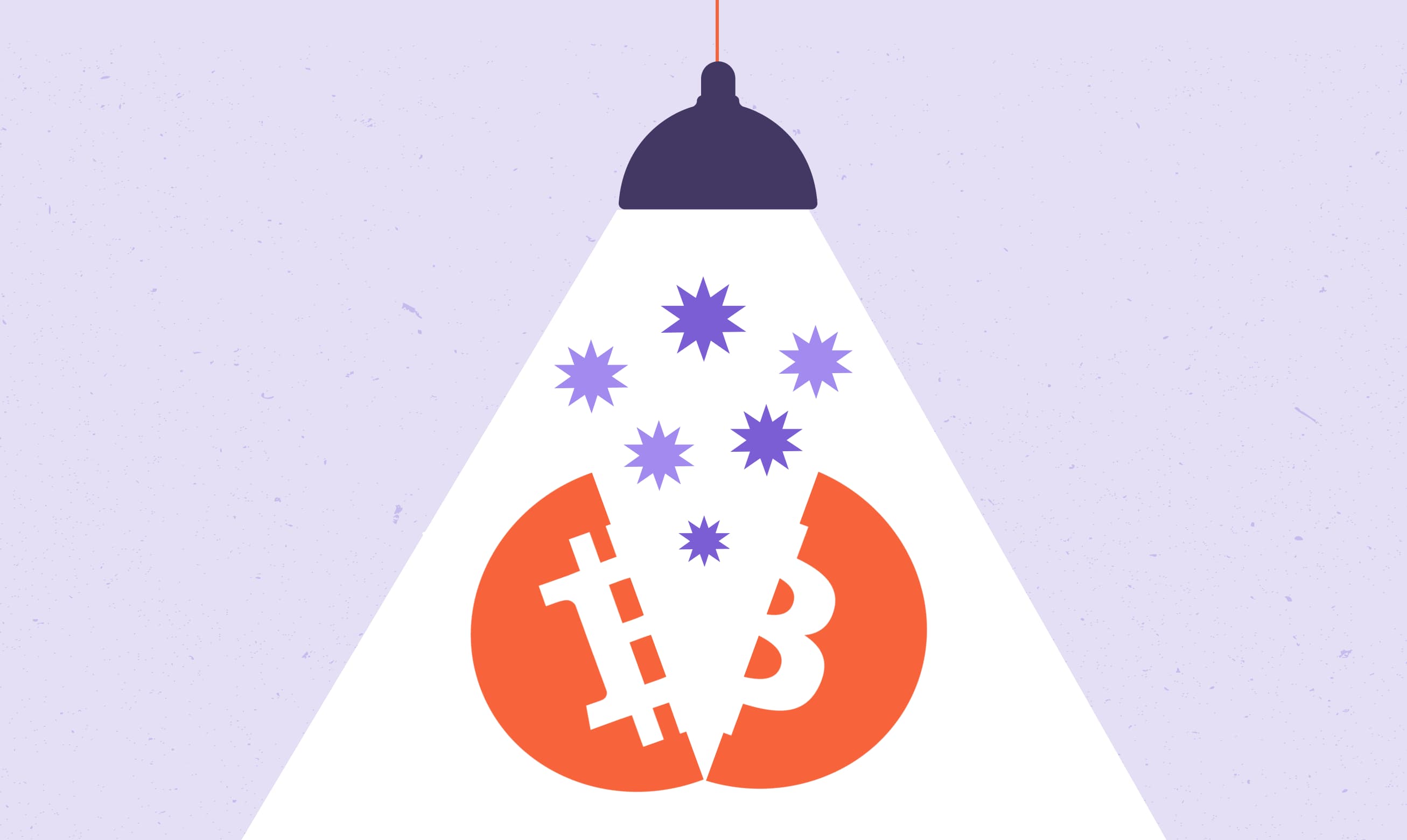The Bitcoin Halving 2024 explained simply.

Every four years, the Bitcoin Halving takes center stage in crypto news. Here, you'll find out what it means and whether it can affect the value of Bitcoin.
Did you know that there will never be more than 21 million Bitcoins? This maximum number is a significant advantage compared to traditional money. By limiting the supply, unwanted inflation is prevented. But how is it ensured that there will never be more than 21 million Bitcoins? And how is this maximum amount related to the Halving? To understand this, let's take a closer look at the Halving.
The cryptocurrency Bitcoin is based on blockchain technology. Basically, you don't need to understand the blockchain in detail for this topic. What's important is that the blockchain dictates how new Bitcoins are created and that there will never be more than 21 million of them. So-called miners keep the blockchain running by validating transactions. These miners solve complex mathematical problems (hashes) with their computers, which requires energy in the form of electricity. As a reward for their work, they receive Bitcoins. This reward is halved every four years. The day on which this halving occurs is called Halving. For example, in 2009, a miner received 50 Bitcoins as a reward. After the Bitcoin Halving in 2024, this reward will again be halved by 50% from 6.25 Bitcoins per block to 3.125 Bitcoins. It is believed that all 21 million Bitcoins will be generated by the year 2140. This means that there will be no more halvings after that.
To understand this, we need to look at what the Halving actually does. When the number of newly created Bitcoins is halved, Bitcoin inflation is also halved. As a result, if demand remains constant, the market price increases, along with the Bitcoin price. At the same time, the costs for Bitcoin miners double. This leads to miners selling their freshly mined Bitcoins at a higher price.
Starting from the Bitcoin Halving in 2024, approximately 164,000 new BTC will enter the market each year. With around 19 million Bitcoins already mined, this represents about 0.86%. This means that the price effect applies to less than 1% of the Bitcoins. Therefore, it cannot be assumed that the Bitcoin Halving will have a significant impact on the Bitcoin price. However, if we take a quick look at the Bitcoin price, a price increase is noticeable after each Halving. Let's take a look at why this is the case.
The mere change in supply may not have enough influence to cause a price increase. Some believe that the Bitcoin price rises whenever the global liquidity provided by central banks increases. This has happened in four-year cycles since the inception of Bitcoin.
Another reason why the Bitcoin price might rise after the Halving is the media attention. The Bitcoin Halving prompts many media outlets to speculate, which can create a certain hype, leading to more Bitcoin purchases. This hype is also known as FOMO (Fear of Missing Out).
The Bitcoin Halving can significantly impact Bitcoin mining. When the reward per block is halved, miners earn fewer Bitcoins, which can reduce their revenue. However, if the Bitcoin price prediction from previous halvings holds true, the value of Bitcoin could increase, potentially offsetting the decline in earnings. Nevertheless, miners must keep a close eye on their efficiency to remain competitive and become more profitable over time. The Bitcoin Halving forces miners to constantly monitor their energy consumption.
The Halving takes place once 210,000 blocks have been mined since the last Halving. Therefore, there is no specific date set yet. According to current projections, the Bitcoin Halving 2024 is expected to occur in April 2024.
During the last Bitcoin Halving, the reward for miners was halved from 12.5 to 6.25 Bitcoins per block. This took place on May 11, 2020, and also resulted in an increase in the BTC price.
A Bitcoin Halving is known to occur every 210,000 blocks and will continue to repeat until the year 2140, when the last of the nearly 21 million Bitcoins that will ever exist has been mined.
When the last Bitcoin is mined, miners will have to derive their income from transaction fees, as there will be no new Bitcoins left to mine. At this stage, the demand for fast and secure transactions will determine the amount of transaction fees. Miners can still make money by including and validating transactions in blocks. Those miners with the lowest operating costs and the most efficient hardware may be able to remain profitable even during this phase.
With each Halving, mining becomes more expensive, which pushes inefficient miners out of the competition. This means it costs more and more money to keep the Bitcoin network running. In turn, this drives the cost of attacking the blockchain to unimaginable levels. Therefore, it can be said that Bitcoin Halvings make the blockchain more secure. Additionally, Halvings increase the fixed costs for miners. As a result, mining is only profitable in the long run if the value of Bitcoin continues to rise. The Bitcoin price is measured in fiat currencies (such as USD or CHF). If these central bank currencies experience higher and, most importantly, constant inflation over the long term, a rise in the Bitcoin price could be the logical outcome.
There is room for debate over whether a Halving has a decisive impact on the Bitcoin price. However, it is clear that Bitcoin Halvings are polarizing events and that there has been a value increase in Bitcoin after each Halving. If you’re already counting down the days until the Halving, you can find the Bitcoin Halving Countdown here.
This article does not constitute investment advice or a solicitation to buy or sell digital assets or other financial instruments or to enter into any other financial transaction. The main purpose of this article is to provide general information. No representations or warranties, express or implied, are made regarding the fairness, accuracy, completeness, or correctness of this article or the opinions contained therein. Therefore, it is advisable not to rely on the fairness, accuracy, completeness, or correctness of this article or the opinions contained herein. Some statements in this article may contain forward-looking expectations based on our current views and assumptions. These statements are subject to uncertainties and may lead to actual results, performance, or events differing from the statements made in this article.
The Cryptonow Group and its subsidiaries, as well as any advisory or representative persons, cannot be held liable in any way for this article.
It is important to note that investing in digital assets carries risks as well as potential gains.
